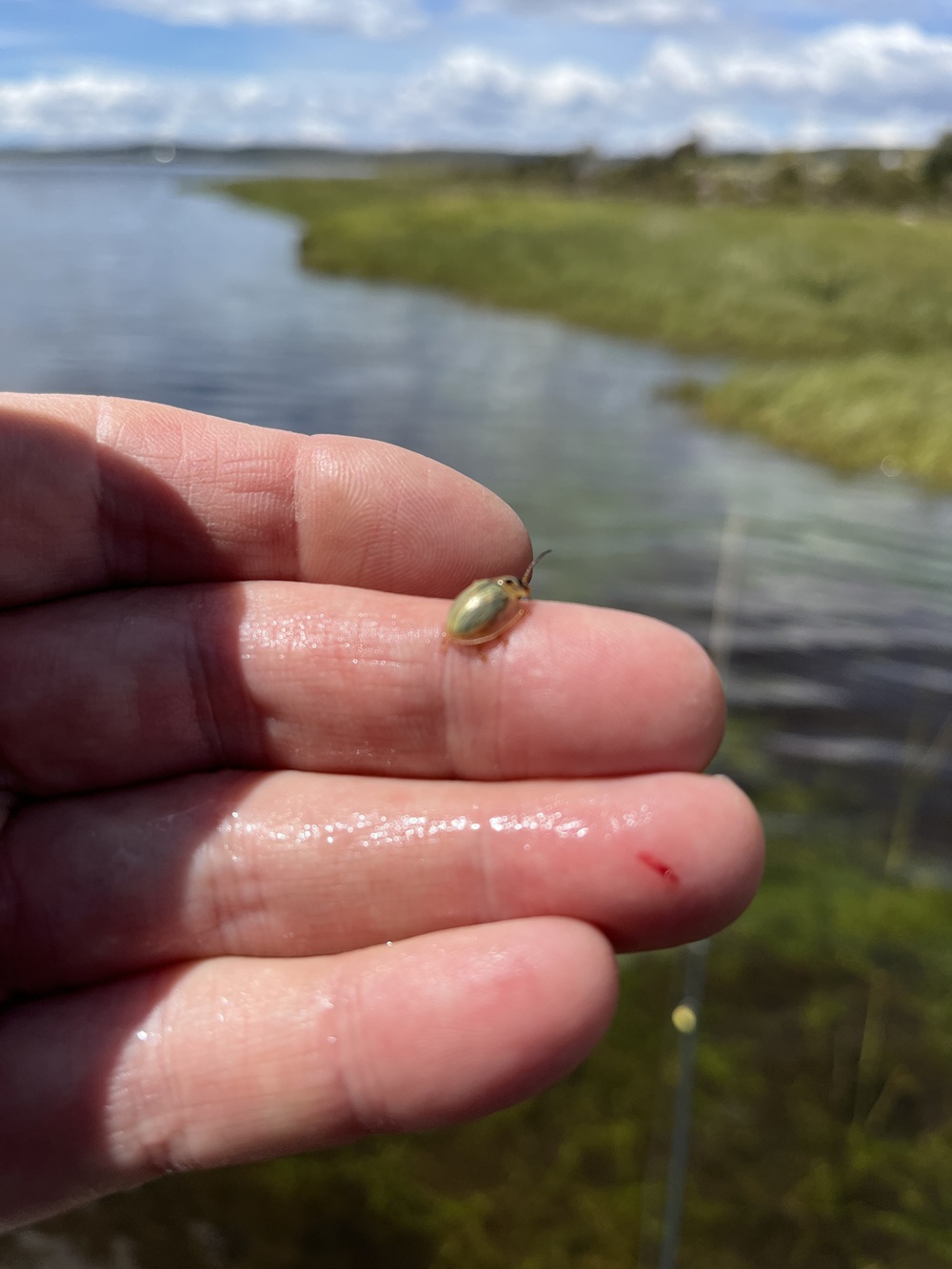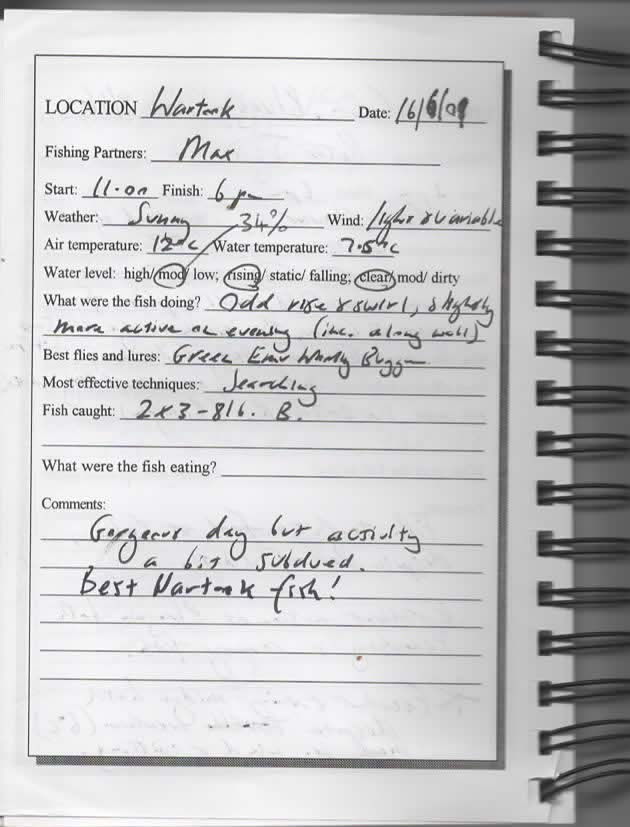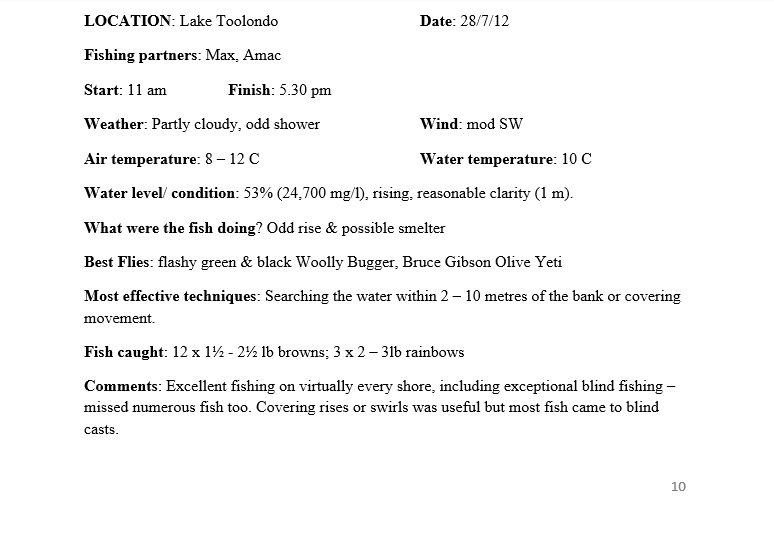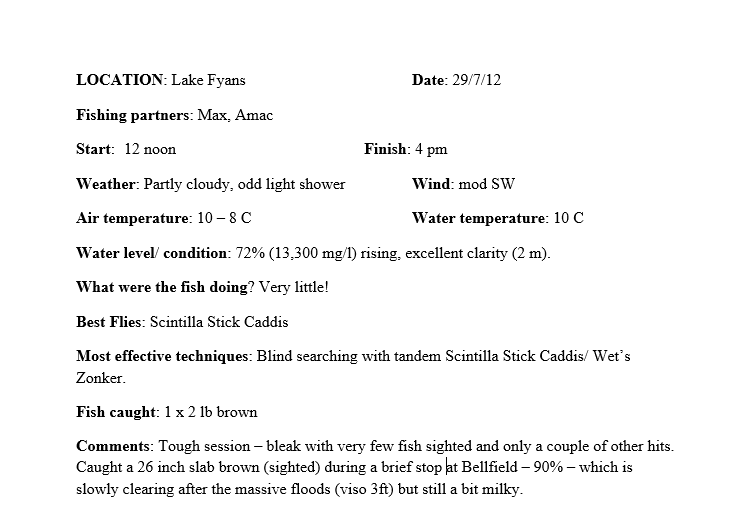
Philip stands in for a temporarily unavailable Jim Allen to talk fishing diaries.
On my annual summer fishing trips to Tasmania’s central highlands, one of the highlights is a morning cuppa at Jim Allen’s shack. Or, if the fishing has been particularly bad (or particularly good!) and I’m off the water early, perhaps instead it‘s joining Jim for one of his famous G&Ts.
Be it a coffee in the morning or something more summer-ish in the early evening, the conversation is always informative and entertaining. Often, we’re joined by other flyfishers. Jim’s shack is something of a meeting place for his extensive network of fishing mates, not to mention his frequent house guests.
Whether it’s just me and Jim, or more likely, several more of our tribe, flyfishing – and especially flyfishing in the highlands – is the main topic. You might think a group of anglers, talking highlands trout fishing, day after day, week after week, year after year, would run out of material. Not a chance. In fact, despite my usual tendency on fishing trips to get a bit edgy about not being out on the water (to the detriment of socialising), at Jim’s shack, I always find it’s a struggle to tear myself away.
 Are the gum beetles coming back?
Are the gum beetles coming back?It’s genuinely fascinating to hear firsthand how other experienced anglers have found the fishing on the dozens of highland lakes – and nearly always with some valuable historic note added by Jim. What are the mayfly doing, are the gum beetles coming back, any jassids yet? And how’s the water level holding up at lake X? As I walk back to our nearby cabin to gear up for the day ahead (or to get some sleep for the next day!), I usually have the uneasy feeling that, with others still gathered at Jim’s, I might have just missed another gem of information, or hilarious anecdote.
***
Besides an (almost) lifelong love of flyfishing, another thing Jim and I have in common, is we’re both diarists. We’ve each kept fishing diaries for decades, and on my recent Tassie trip, we talked a lot about them.
My own diaries are mostly functional; practical. Using a series of prompts for each fishing day, I record the basic facts about where I fished, who I fished with, weather, water conditions, what the fish were doing, best flies/ techniques and what was caught.
The opportunity for pure entertainment value is mostly available in the generic ‘Comments’ section. Often, this continues to be fairly restrained observation, like ‘good day’ or ‘thunderstorms late seemed to quiet the action/ increase it’, or ‘rise went from nothing to full-blown in 5 minutes’, etc. Occasionally though, a particularly good (or bad!) day will contain a note with more flourish and detail, perhaps even presented in eye-catching bold font. This might relate to an exceptional fish caught… or lost. In the latter case, the written word is possibly an attempt to retain some hard evidence of something that never quite was.
 An entry from my handwritten diaries - I have about a dozen volumes of these.
An entry from my handwritten diaries - I have about a dozen volumes of these.The evidence would suggest that another favourite in ‘Comments’ is triumph over adversity: say, lots of fish or big fish caught despite snow, ice, gales, getting lost, bogged, etc. I think this may be, in part, to remind my future self that, despite how bad things might appear, you never know.
My diaries were handwritten up until April 2012, when I finally transitioned to electronic. The first such entry, using my laptop, just so happened to be a session at Tullaroop Reservoir. It was a good one too, with 3 decent trout landed. Although I can’t quite recall, I’m guessing I chose a successful trip to launch the new format. It’s interesting that I still think of this diary as ‘new’ compared to my old spiral bound editions, and yet that April 2012 day was 527 pages and 13 years ago.
 I couldn't wait to record this cracking day at Toolondo...
I couldn't wait to record this cracking day at Toolondo...The romance of the old paper diaries is hard to argue against, but I have to grudgingly admit to the practicalities of opening the laptop. As well as a tidier presentation (and more decipherable script than my scratchy handwriting), the search function instantly allows me to verify the last time we saw red and black jassids (and where), or the Mitta tailwater’s flow and time of year when we had the best Kossie duns. Among other things, my diaries are proof of the frailty of human memory – mine included!
Jim’s voluminous and handwritten hard copy diaries are a topic in their own right (complete with guest contributors) and are best left to their owner to describe at another time. I will say that last trip, Jim chatted with me about his plans for what is perhaps an unequalled record of Tasmanian highlands flyfishing. Thankfully, Jim is exploring ideas for publication to make these precious records more available. Stay tuned…
Meanwhile, we both noted that, while some days, it’s easy – even a joy – to complete a diary entry, at other times, it can be a bit of a chore. If there’s nothing remarkable to report, and/ or you’re tired and hungry, it can take some willpower to pull out the diary and dutifully complete an entry. But record you must, because once a day or two passes, small yet significant details can already start to slip away – particularly on a multiday trip.
 ... a day later, completing this entry was a chore. Useful diaries have to record the bad just as diligently as the good. (By the way, 'slab' is shorthand for poor condition.)
... a day later, completing this entry was a chore. Useful diaries have to record the bad just as diligently as the good. (By the way, 'slab' is shorthand for poor condition.)So, despite the temptation to sit back and relax after a big day on the water, we’re glad we kept a record. As well as the practical angling value of the information collected, and pleasure of revisiting days gone by, after all these years, we can say, ‘Remember when…?’ and know the account is accurate.











